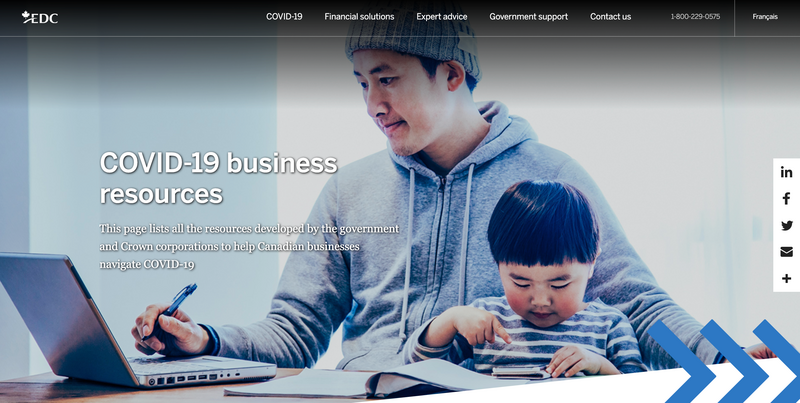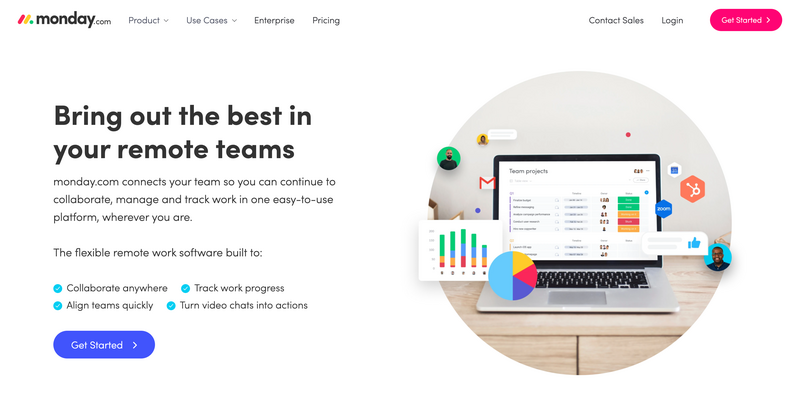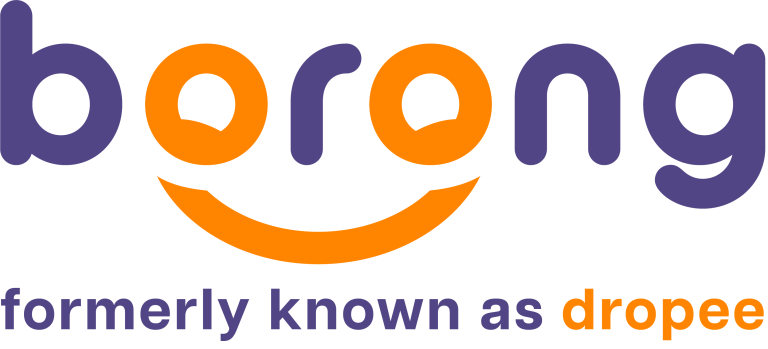From unprecedented supply chain disruptions to shifts in consumer behaviours, Covid-19 has massively impacted the B2B industry. Eight months down the road, what started out as a response to the global pandemic has now become the new normal as businesses continue to move forward.
Learn more about the impact of Covid-19 on B2B Trade here!
Amidst all the challenges that came, there are important lessons that can be learned from the crisis.
Lesson #1: Digital Transformation is a Top Priority
The digital wave has taken over and more players are finally seeing the value of pivoting their business online.
Several B2B companies had already started investing in digital initiatives but the pandemic played a major role in expediting the adoption process. Since Covid-19, 70 to 80% of B2B decision-makers prefer digital self-service solutions and the belief in digital efficacy has increased by up to 22% globally.
The crisis forced B2B entities all over the world to rethink their business models and to explore alternative means of optimisation. Whether it’s going online to meet where consumers are or adopting e-commerce software to automate processes, going digital is the way forward.

With 75% of B2B purchases being made online, digitisation is integral to a successful B2B strategy.
Lesson #2: Communication is Key
Listening and addressing the problems faced by your customers, clients, and peers is a step in the right direction and the pandemic has only cemented this.
Contact your most valuable customers and find out what you can do to meet their needs – even if they’re not in the position to transact with you. At times of crisis, values are more crucial than ever.
Funnel the feedback you receive into creating new opportunities, which can range from products and services to additional sales channels.
For example, Export Development Canada, the state’s export credit agency that provides insurance and financial services, launched a Covid-19 content hub after receiving thousands of inquiries from their customers relating to their accounts.

The information resource center helped customers stay on top of the latest updates and get insights into helping them make better business decisions during this period of uncertainty.
Another good strategy is to share frequent business updates. Whether it’s updating your social media pages or sending a text to let your customers know how you’ll serve them better, communication is a resource that has become all the more valuable during isolation.
Lesson #3: Invest in Technological Solutions that Bring Value
Regardless of your business model, Covid-19 has helped many companies take a step back and reassess how they’re using technological solutions.
Due to the pandemic, almost all of our interactions became more reliant on digital solutions, from peer-to-peer interactions, payroll and payment solutions, sales prospecting, and more. This has led to an increase in individuals and businesses questioning their technological arm.
What does this mean? Businesses must find new ways to work faster, and investing in digital solutions is one of them.
For some, it could mean investing more and for others, it may involve doing housekeeping to eliminate certain processes and investments that don’t play a role in the company’s growth and progress. The goal here is to streamline processes and increase productivity across all levels.
Lesson #4: Flexibility and Creativity Can Go a Long Way
Covid-19 taught many businesses the value of agility in responding to sudden changes. From movement control orders to border closures, B2B businesses were faced with extreme impositions that threatened to rattle the foundations of their day-to-day.
These events forced businesses to learn how to switch gears in the face of adversity and make changes to continue to survive.
For many industry players, the effects of the virus led them to identify certain weaknesses in their playbook and take the necessary steps to fix them. Lots of B2B companies also reinvented their traditional business processes by stepping outside of their comfort zones and exploring new and inventive ways to stay relevant.
A great example of this is Monday.com. When the impact of the virus led to worldwide lockdowns and working from home became just another day at the “office”, the work solution and project management software company pivoted to meet these new expectations.

They created a remote working portal. From ready-made work templates, Covid-19 communication plans, and personalised support, the Monday.com team went above and beyond to support the evolving needs of their customers.
Lesson #5: Explore New Ways to Market Your Product
For many B2B brands that have relied on face-to-face interactions as their main source of generating leads, Covid-19 evidently put them in a bind.
With an increase in people staying at home due to lockdowns, numerous B2B brands had to create virtual experiences to connect with their clients and prospects.
B2B marketers started to look into alternative means to connect outside of the traditional playing fields like tradeshows, expositions, and in-person events. Paid advertising, email marketing, and retargeting tools started becoming part of the arsenal as businesses adapted their marketing plans to communicate with a predominantly online audience. And of course, virtual events stole the show.

Adobe pivoted its Adobe Summit 2020 event for 20,000 in-person attendees in Las Vegas and hosted a virtual conference that attracted 400,000 online attendees across 195 countries. Salesforce, on the other hand, converted its World Tour Sydney into an online event that boasted 1.5 million views compared to its initial target for 10,000 attendees.
Lesson #6: B2B Buyer Preferences are Changing
More specifically, the affinity for customer self-service channels is growing amongst B2B buyers.
But first, let’s find out what a self-service channel is.
A customer self-service channel (also referred to as a self-service portal) refers to a website that allows customers to complete the buying journey on their own – without the need for human interaction.
This journey includes everything ranging from research to price evaluation, and finally, to checkout. Components of a self-serve website can include things such as FAQ pages, online chats, search functions, price filters, product listings, how-to videos, guides, and more.
Over the course of the past few years, B2B procurement and purchasing patterns had already started to migrate away from face-to-face encounters with sales reps to self-service systems. This trend was accelerated even further when Covid-19 hit.
A global report done in collaboration between PROS and Hanover Research shows that B2B purchasing via self-serve channels has increased by 28% since Covid-19, while only 1/3 buyers claimed that their B2B vendors were prepared for the shift and already had digital channels running.
This means that there is room for B2B businesses to expand and refine their adoption of self-service channels.
The report further shows that Covid-19 Is greatly impacting vendor preferences amongst B2B buyers and 35% stated that the improved digital purchasing experience is a major influencer when it comes to selecting a vendor.
Competitive pricing (40%) and supply availability (39%) are also key drivers behind vendor preferences. What this shows us is that B2B businesses that can provide buyers with a seamless digital experience, paired with up-to-date prices and products that are relevant to their needs, are more likely to retain their customers in an increasingly competitive landscape.
Lesson #7: Re-evaluate the Quality of Your Website
From inventory management to product delivery, the impact of the Coronavirus has affected all levels of business operations. A recent poll by the Institute of Supply Chain Management showed that 75% of companies reported supply chain disruptions due to restrictions on transportation.
With the outbreak causing spikes in demand for some products whilst also imposing a new set of limitations, one of the greatest challenges posed is the ability to replenish their inventory.
There are, however, several ways to mitigate the situation.
For B2B players who are part of the e-commerce sphere, it is crucial to optimise your website and ensure that its infrastructure is able to support the peaks in traffic.
To ensure minimal disruption to your customers’ shopping experience, maximise efficiency by simply making things easier for your customer (and yourself). These include:
- Showing delivery tracking on all orders
- Displaying accurate stock levels on your website
- Keeping records of your customers’ order histories
- Displaying real-time pricing
- Ensuring out-of-stock items are correctly labelled
- Enabling notifications for when items are back in stock
A Quick Overview
Covid-19 is a shock to the system, and it has forced many B2B decision-makers to take a step back and re-evaluate the nature of their business.
For many, this has created an opportunity for them to innovate. The one unifying theme that ties all these lessons together: Digitisation is a core element behind the sustainability and transformation of the B2B industry.
For B2B businesses across Malaysia, Dropee is an e-commerce solutions provider that is dedicated to helping local companies streamline and ultimately grow their business.
Whether you’re currently in the midst of transitioning into an online environment, if you are looking to expand your reach and connect with new customers or if you want to find out how to promote your B2B business, be sure to get in touch with us so that you can schedule a free consultation with our sales team and learn more about what we do.


